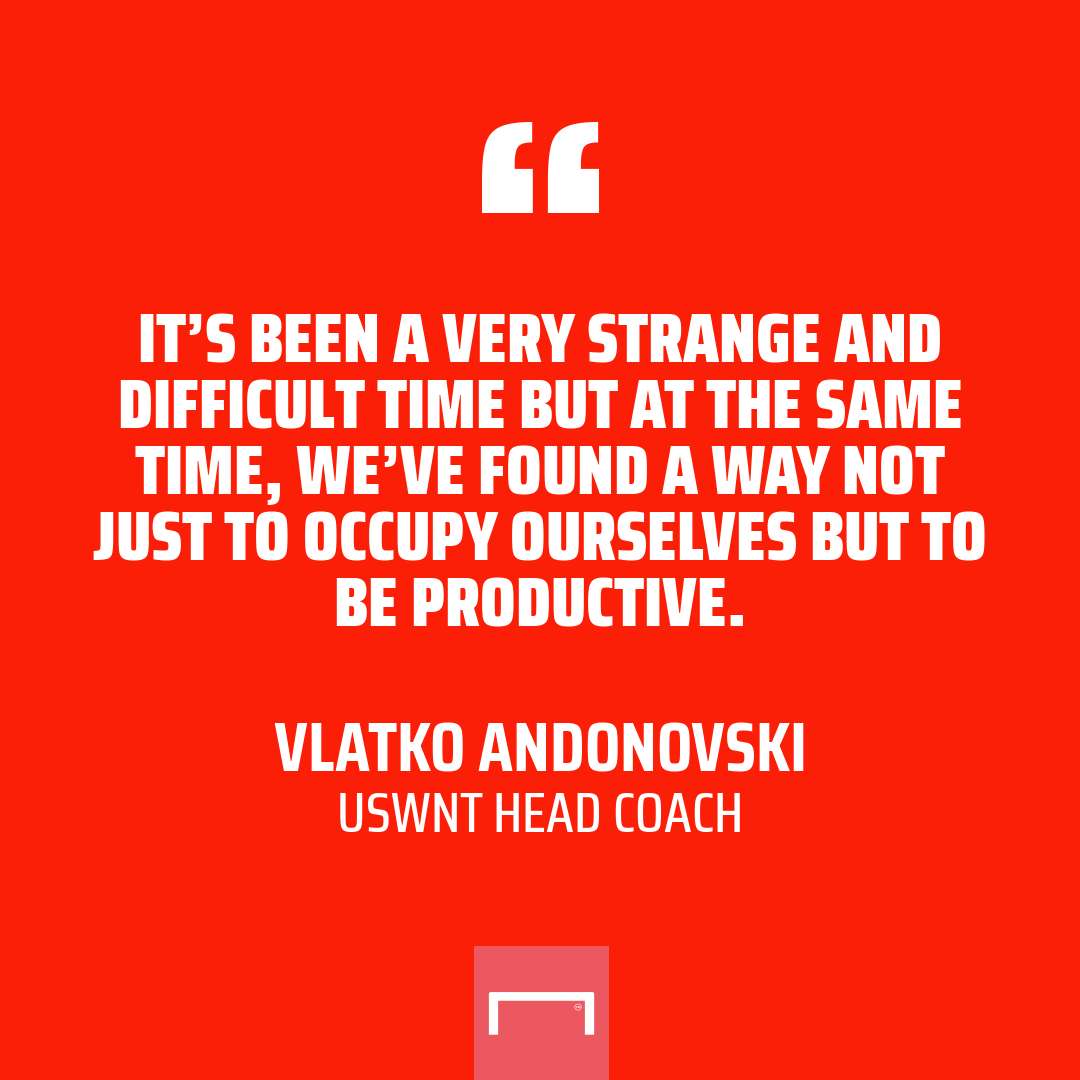Vlatko Andonovski had a lot more free time this year than he was anticipating, and he wasn’t about to let it go to waste.
The U.S. women’s national team coach was supposed to have taken charge of his first major tournament at the Olympics this summer.
There would have been camps and friendlies leading up to the Tokyo Games, and maybe even a victory tour after them. That would’ve been in addition to a full NWSL season to scout as the coach eyed players for the present and future.
What Andonovski got instead was a pandemic that dropped with a massive thud, leaving a huge crater on his schedule.
The NWSL and college games sparsely filled his planner with scouting opportunities but with no USWNT activity between March and October, Andonovski – like so many others across the world – was suddenly presented with a host of unexpected spare time.
As the USWNT gets set to take on the Netherlands on Friday, their first match since March, it may well be that Andonovski’s clear schedule works out to the benefit of his team – and U.S. Soccer in general.
“It’s been a very strange and difficult time but, at the same time, we’ve found a way not just to occupy ourselves but to be productive,” Andonovski said on a call with reporters.
In many ways, Andonovski is the ideal coach to be left to his own devices for a long stretch.
“He is such a scholar of the game,” USWNT defender Crystal Dunn told Goal. “I can tell that when he is coaching us and trying to implement new ideas, he's able to do so in a way that we all can learn.”
“This man studies the game so much and spends so much time planning sessions, planning these PowerPoints for us, teaching us,” USWNT midfielder Lindsey Horan added.
With nothing but time to indulge his scholarly pursuits, Andonovski got to work. One of the main items on the agenda was an initiative that has long been a priority for the program.
“We were able to start finalizing the standardizing and unifying the whole national team system from the senior team all the way down to the Under-14s,” Andonovski said.
The U.S. brought their senior team, U20s and U17s all together for this year’s January camp to help facilitate that process. It’s an approach that the program feels can pay major dividends as players move through youth national teams up to the senior side.
“We were able to standardize tactical principles so we did everything possible to make the transition for any youth player coming through the system more streamline,” Andonovski said.
“So, whether it’s a U14 going to U17, or a U17 going to U20 and moving up to the full national team, we hope to make the transition as easy as possible for the players.”
Of course, Andonovski also had plenty of time to drill down more specifically on his own team, studying game and training film and devising new tactical wrinkles that will aid his already meticulous training sessions.
Those sessions are in stark contrast to the more freewheeling style favored by Andonovski’s predecessor Jill Ellis, whom he replaced in October 2019.
 “The trainings have really been quite different,” Dunn said. “We do a lot more positional drills. Some days there will be just defenders working on things, and midfielders working on things, and forwards working on things, that all are geared towards their positions.”
“The trainings have really been quite different,” Dunn said. “We do a lot more positional drills. Some days there will be just defenders working on things, and midfielders working on things, and forwards working on things, that all are geared towards their positions.”
Asked if the USWNT works more on tactics under Andonovski than Ellis, Dunn replied: “Oh yeah. For me, personally, the position that I play has been broken down even more since he’s taken the new role, so I've really enjoyed that.”
“There’s this refreshed sense of excitement,” defender Abby Dahlkemper told reporters. “I think he came in obviously at a tough time where we didn't know the pandemic was going to hit, but he’s handled it great.”
The payoff for all of Andonovski’s extra work has been fleeting during the pandemic but it is slowly starting to come into focus.
Friday sees the USWNT return to the field with an actual game. There is a planned camp in January. And slowly but surely, the rescheduled Olympics next summer appear more likely by the day as optimism over a Covid-19 vaccine grows.
The USWNT boss knows that there’s some extra work to be done after his side had such a long layoff, but he’s been laying the groundwork to get back up to speed as quickly as possible.
“Going into these camps is not easy,” Andonovski said. “It’s not that we have to start everything over but we have to go one step back before we move two steps forward.”
For a team that’s used to winning, moving backwards usually isn’t an option. But as the world came to a halt this year, Andonovski did everything he could to make sure his team came out stronger on the other side.
“People think, ‘OK well what more can they do? They win a lot,’” Dunn said. “I think Vlatko really came in and was like, ‘Yeah we're good, I'm not trying to change anything but I want everyone individually to be able to develop still.’
“You can always continue to get better.”
